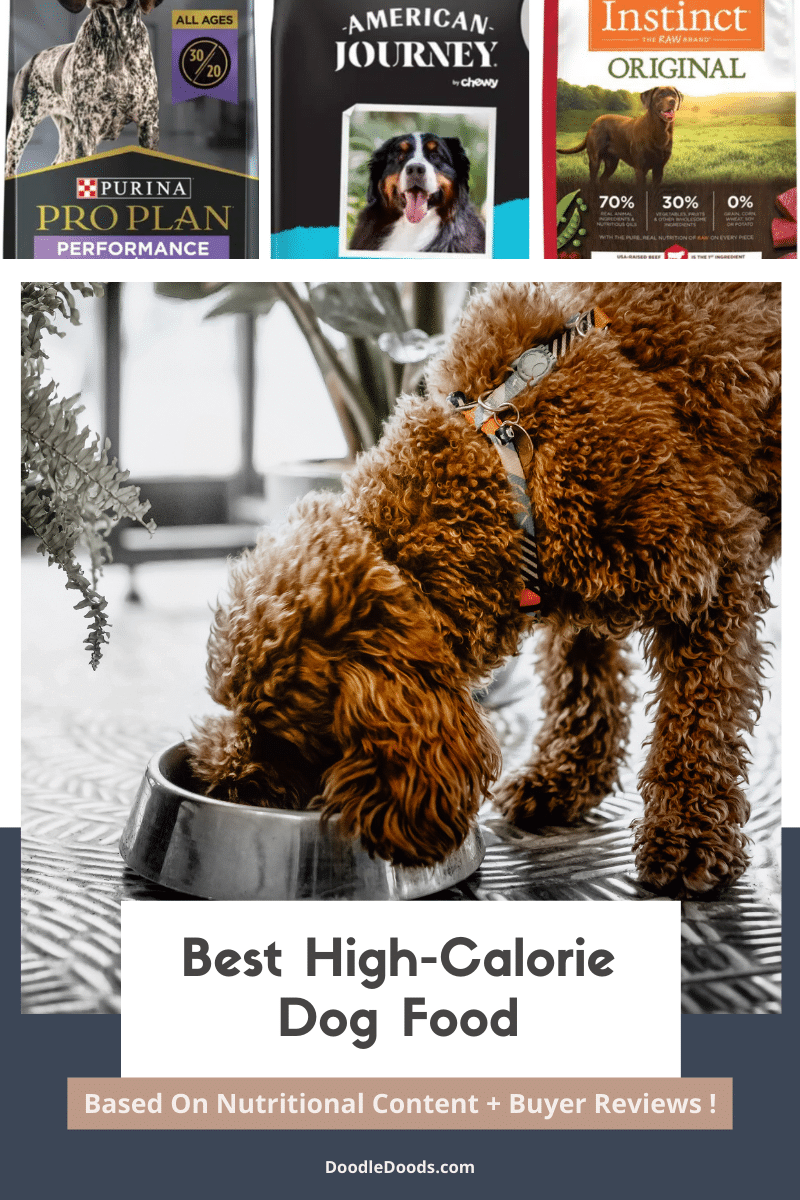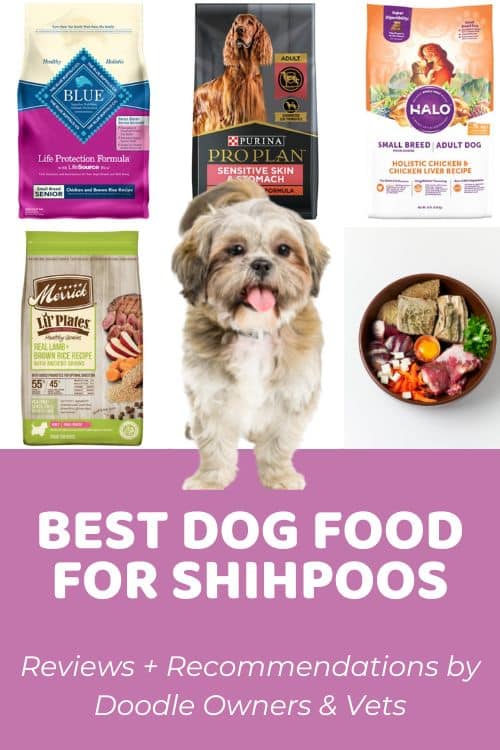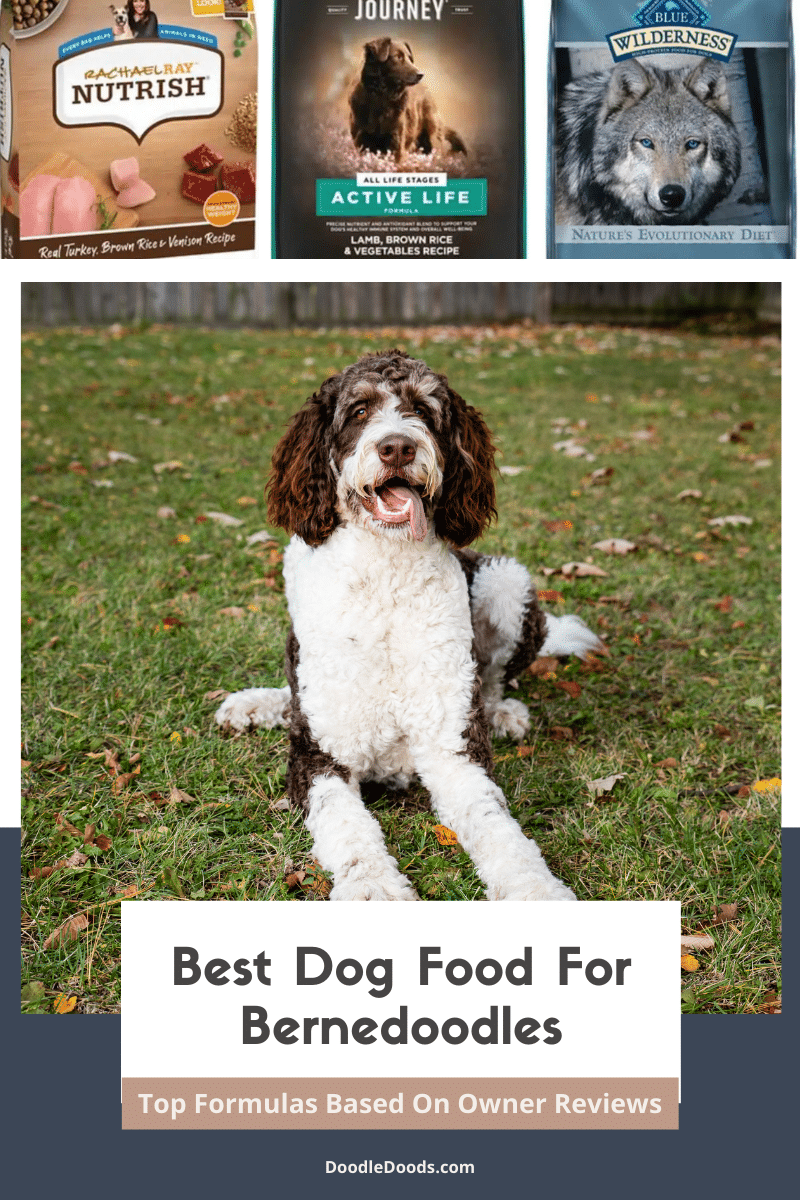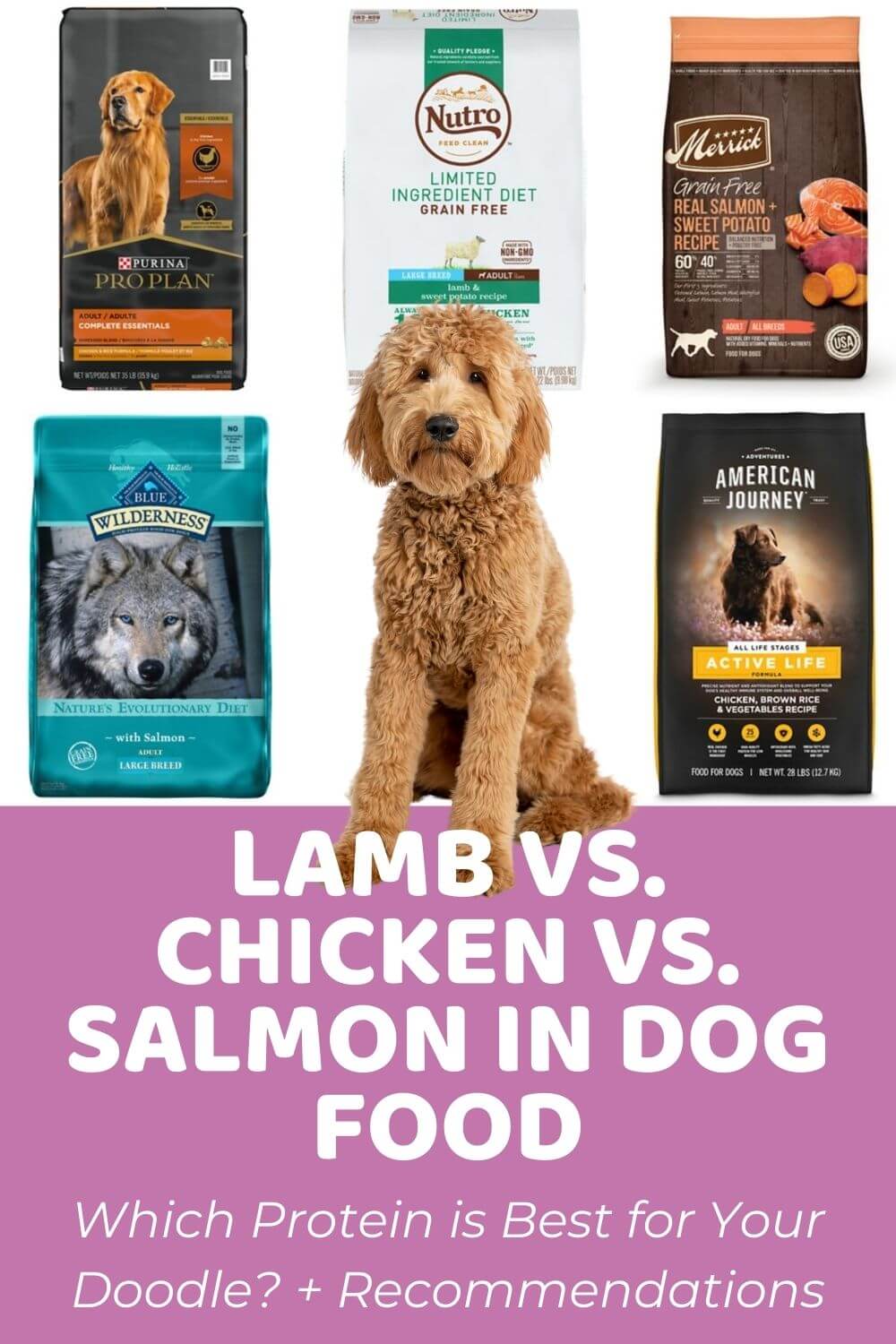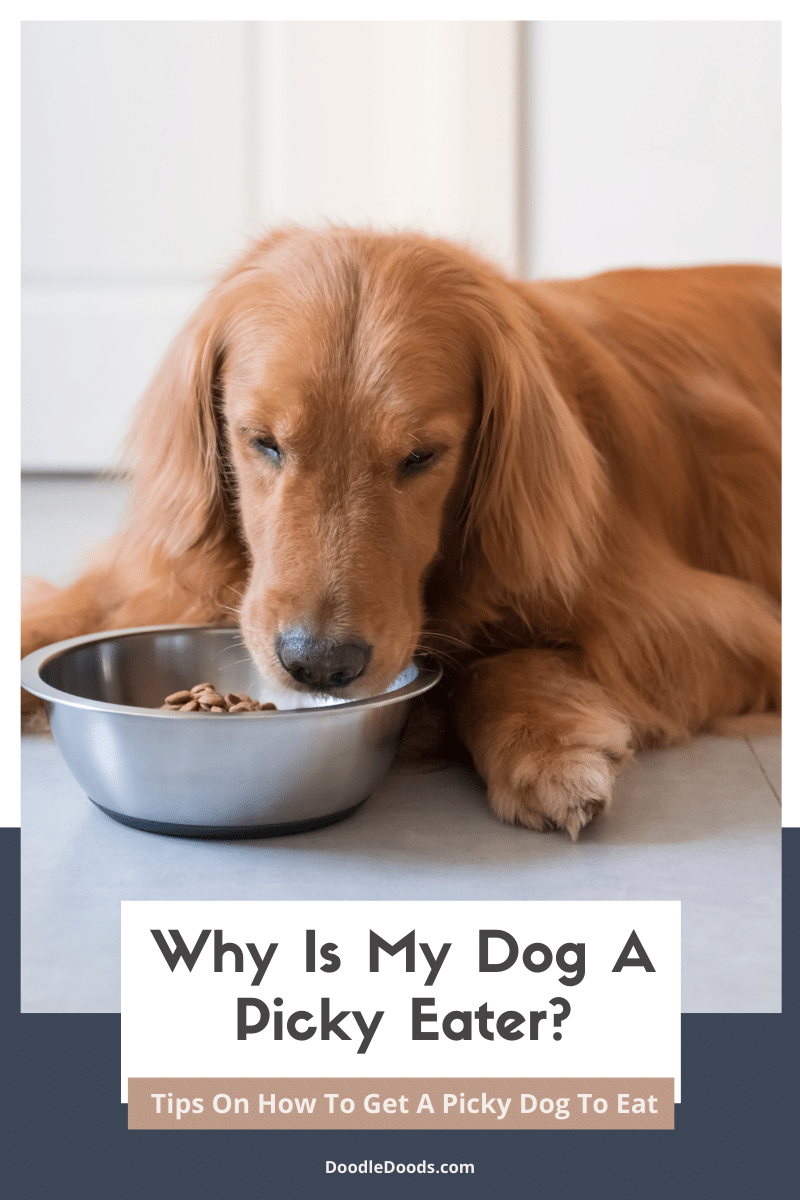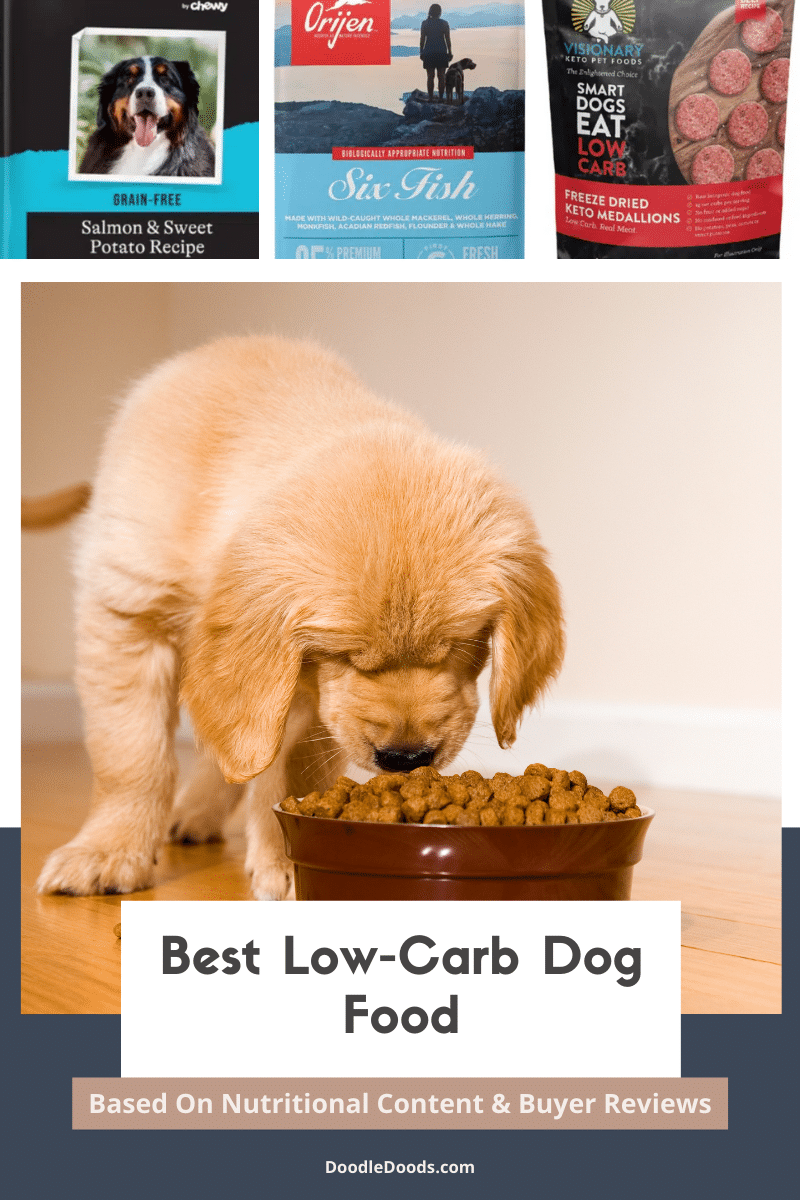While dogs are now widely considered to be omnivores, meaning that they do better on a more varied diet than strict carnivores, most mutts thrive with a meat-focused food. That’s why most owners are advised to opt for a blend that contains a protein source as the top ingredient. However, under certain circumstances, a dog’s nutritional needs shift away from the norm, and what works for the majority of dogs no longer works for them, and so they may need a low-protein dog food.
Protein is an essential nutrient, providing the building blocks for cells and tissues. While it is available from various grains, seeds, and vegetables, by far the best source of protein for most dogs is meat – which is why their foods tend to be inclined towards more meat is better. This can make finding a low-protein dog food much more difficult than other specialized formulas. Luckily, though, these days, you do have a few to choose from.
Here we’ll take a look at some of the very best low-protein foods currently on the market.
Table of Contents
- Low-Protein Dog Food: What Exactly Is It?
- Reasons Your Dog May Need A Low-Protein Formula
- Health Conditions That Require A Low-Protein Diet
- Best Low-Protein Dog Foods: Buyer’s Guide
- Best Low-Protein Dog Foods: Reviews
- Dry Vs. Wet Food? Which Is Best For A Low-Protein Diet?
- Home-Made Alternative Meals
- Feeding Your Doodle A Low-Protein Diet: Frequently Asked Questions
Top 5 Low-Protein Dog Foods Preferred By Pet Parents
If you’re just here for the recommendation, here they are, alongside links to where you can buy the food (from our lovely favorite pet store Chewy). However, if you’d like to learn a little more about the benefits of low-protein food, whether because your vet has recommended it for your pet or you think that maybe they should, then stick around.
-
Pick #1:
Gentle Giants Natural Non-GMO Dog & Puppy Chicken Dry Dog Food
Complete and balanced nutrition for all dogs, but especially for those with sensitive tummies, Gentle Giants Natural formula contains only good dog stuff – none of the bad. -
Pick #2:
Royal Canin Veterinary Diet Adult Renal Support S Dry Dog Food
Aimed at dogs with kidney issues, Royal Canin’s Renal Support Food is for vet-recommended diet changes only but has the right ingredients to boost energy and health. -
Pick #3:
Hill’s Prescription Diet l/d Liver Care Original Flavor Wet Dog Food
Part of a prescription diet that requires vet authorization, Hill’s Liver Care formula is extremely low in both protein and fat but has added nutrients to boost liver function. -
Pick #4:
Diamond Naturals Light Formula Dry Dog Food
Very low in calories and with base-level protein and fat content, Diamond Natural’s Light Formula is the perfect food for low-energy pups and those looking to shed a few pounds. -
Pick #5:
Purina Pro Plan Veterinary Diets NF Kidney Function Wet Dog Food
With their great-tasting wet dog food for kidney care, Purina has crafted another excellent offering that boasts an impressive range of essential nutrients with a low-protein profile.
Low-Protein Dog Food: What Exactly Is It?
Many canine experts consider protein the most essential macro-nutrient in a dog’s diet. That’s why it’s typically the top ingredient in any food. In fact, the Association of American Feed Control Officials (AAFCO), an organization that regulates animal feed, specifics that any dog food needs to contain, as a bare minimum, 18% crude protein as standard for adult dogs and 22.5% for growing puppies and pregnant females.
The importance of protein to a canine diet runs deep. Proteins are made up of amino acids, and your pup needs a constant supply of these to avoid certain health issues. It aids with maintaining and repairing cells and tissues and supports an effective immune system. It plays a crucial role in creating hormones, antibodies, and enzymes. Protein can also be a key source of calories to fuel a dog’s energy levels, keeping them strong and healthy.
As protein is considered so vital to the overall health and well-being of dogs, most foods typically average around 25% of the good stuff, and some even go as high as 40%. For this reason, anything below 22% might be considered on the low-protein side. Foods that contain less than 20% will be harder to get hold of without a prescription and will only be beneficial to dogs who, for various medical reasons, require a low-protein diet.
Reasons Your Dog May Need A Low-Protein Formula
Low-protein diets are typically only recommended either for dogs that have certain health conditions or that are at risk of developing said health conditions. These are typically linked to the functioning of certain organs of the body that are heavily involved in protein metabolism. Too much of this puts stress on these organs, which can result in impaired functioning and some of the more severe symptoms linked to this.
If the disease is serious enough, then it might be the case that your vet puts your pet on a prescription-only formula where the protein ratio is far lower than the recommended amount. However, if your senior or overweight dog is merely at risk of developing a condition, it will likely be sufficient for you to switch them over to a recipe on the lower end of their protein needs (between 18 and 22%).
It goes without saying that you should always consult your vet before making any drastic changes to your pet’s diet – especially ones that involve lowering their protein intake.
Health Conditions That Require A Low-Protein Diet
Several of the body’s organs play a crucial role in breaking down protein to be used in the body. The small intestines, liver, and kidneys are among these. That’s why it’s primarily with conditions affecting these where a low-protein diet is most effective.
Renal Failure
Kidney issues are more common in canines than you might think. Happily, however, more often than not, this is an issue that can easily be managed through diet. Reducing protein levels stop the organs from becoming overloaded when filtering nutrients or removing waste byproducts. This prevents the build-up of the products and associated symptoms.
Liver Disease
The liver also plays a key role in processing toxins produced by protein metabolism. A damaged liver has a reduced ability to do this with high amounts of low-quality protein. Decreased liver function can cause an accumulation of digestive by-products. If these reach the brain, they can trigger hepatic encephalopathy – a decline in brain functioning.
Protein-Losing Nephropathy (PLN)
PLN refers to damage to the filtering mechanism of the kidneys whereby large protein molecules can pass through and are lost in the urine. This issue can also accelerate progressive kidney decline. While it may seem counterintuitive, limiting dietary protein can reduce these gaps and so actually enhance overall protein absorption.
Protein Intolerance
More common than you might think in dogs, dietary protein intolerance is caused by the body’s inability to adequately break down the proteins. This leads to gastrointestinal and skin symptoms similar to most other allergies. To treat this condition, the vet often prescribes a low-protein elimination diet to successfully identify the key culprit.
Bladder Stones
Stones form in a dog’s urinary tract when there is a higher-than-normal concentration of minerals in the urine, which then crystallizes. Too much animal protein raises urine calcium levels, leading to the growth of these urate crystals while also reducing the amount of urinary citrate, the chemical in urine that helps prevent them from forming.
Best Low-Protein Dog Foods: Buyer’s Guide
Happily, in understanding more about canine health, food manufacturers have come up with various recipes that can support pets with wildly different nutritional needs. This means finding food that will work for your pup shouldn’t be too difficult. You just need to know exactly what to look for.
High-quality Protein Source
When you’re opting for as little protein as possible, you want to be sure that the stuff that gets through is as packed with the essential amino acids your dog needs as it can be. For dogs, animal proteins are still number one. While plant proteins have other health benefits and may be included in dog food for these reasons, canines simply can’t digest them as efficiently as they can animal protein.
Meat meals are often also far more nutritious than regular old meat. This is because when say, chicken is listed as an ingredient, the quantity given includes the water content, whereas with meal the water and fat have been removed. So, while likely weighing a little less, pound for pound, there is more of just the good stuff in there. This means that with low-protein foods, it’s good to look for one with meal listed in the top three ingredients.
Low Phosphorous Content
All dogs need to consume enough dietary phosphorus to support a healthy skeletal system. It plays a crucial role in bone growth and development – so, as you can imagine, a growing puppy requires high concentrations. Yet, while an essential mineral in a canine diet, phosphorus can be an issue for dogs with kidney issues. It’s incredibly taxing on weakened kidneys. Most dry dog foods contain around 2% – kidney care dogs should really have less than 1%. 0.6% is usually the right proportion for these dogs.
Balanced Nutrition
You’re playing around with the recommended ratios for dog nutrition; that’s why the rest of the ingredients in the food you choose must still add up to being a balanced formula that supports your pup’s overall health and well-being. All right amounts of other vital vitamins and minerals, for instance, should be accounted for. In fact, the more nutrient dense the food, the better – especially if you’re struggling to get your hound to eat enough. You also want to be sure there’s not too much fat content in place of protein.
Great Taste
When you’re replacing protein with other ingredients, needless to say, the taste of a food is the first thing that suffers (from your dog’s perspective, at least). Lack of appetite can also be a symptom of kidney and liver complaints (as well as numerous other illnesses), so this can become a real problem for the dogs in question. That’s why it’s good to opt for a food where the manufacturer has recognized this issue and has also done something to address it so your dog will actually eat the food when you put it down.
Best Low-Protein Dog Foods: Reviews
Best for Mature Mutts: Gentle Giants Natural Non-GMO Dog & Puppy Chicken Dry Dog Food
Protein: 22% min Fat: 9% min Calories: 358/cup Fibers: 4% max
With a protein content higher than 20%, this fab food wouldn’t necessarily be numbered among the low-protein foods designed for pups with serious health conditions. However, for non-diagnosed dogs that are a little older, it can be a great food for taking the strain off organs and preventing the onset of kidney or liver conditions. Beyond that, the healthy mix of ingredients makes the food rich in glucosamine, chondroitin, and omega fatty acids, all of which support optimal joint health in senior pups.

Pet parents have great things to say about this excellent kibble, especially those with dogs that have food intolerances that usually make their lives a misery. Despite the low-fat content (which prevents pups that are slowing down from piling on the pounds), many reviewers mention increased energy in their older four-legged friends. They also comment that their pets seem in “just overall better health” with bright eyes and regular, well-formed poops. Most hounds will gulp it down with gusto – which is always good news!
Pros
- A well-developed low-calorie food with an assortment of incredibly beneficial nutrients – particularly for older dogs.
Cons
- At 22% minimum protein, this food might not be considered quite low-protein enough for dogs with more severe medical conditions.
Best for Kidney Issues: Royal Canin Veterinary Diet Adult Renal Support S Dry Dog Food
Protein: 10.5% min, 14.5% max min Fat: 16% min Calories: 365/cup Fibers: 3.7% max
As outlined above, kidney health concerns are one of the more common reasons owners are steered towards a low-protein food. This kibble is formulated explicitly for these dogs. However, due to its extremely low protein content (low-protein digestible carbohydrates like rice and corn are the primary energy sources in this formula), it is available only with vet authorization. Precise phosphorus, sodium, and fatty acids amounts are also used to help reduce the concentration of minerals that weakened kidneys have to filter.
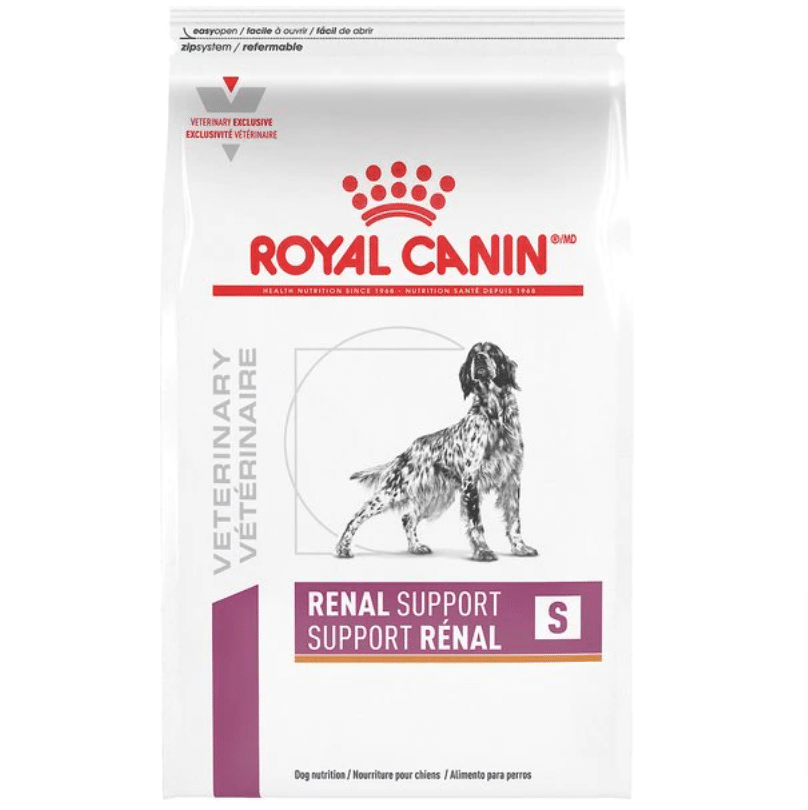
As outlined above, one of the greatest difficulties owners of dogs with kidney issues face is getting them to eat at all. That’s why this recipe also focuses on tempting picky pups to eat with its extra-savory aroma and flavor. And, according to the reviews, it does this pretty well. When put down, it “disappears instantly.” Aside from that, the energy-dense formula of the food also means that just a small amount is all that is needed for total daily nutrition, even when getting your pet to eat is a particular problem.
Pros
- Even though no one wants to think about their pet getting sick, this food does an excellent job of supporting those with kidney issues.
Cons
- Negative reviews feature the few dogs that don’t like the food so much, as well as how much the food costs.
Best for Liver Care: Hill’s Prescription Diet l/d Liver Care Original Flavor Wet Dog Food
Protein: 4.5% min Fat: 5.5% min Calories: 515/can Fibers: 2% max
The first of our wet food picks. Due to the higher moisture content, the proteins in these can go much lower than with dry foods – and this is certainly the case with Hill’s product which contains just 4.5%. Alongside more optimum protein and fat levels to support dogs with liver issues, the food also contains therapeutic amounts of l-carnitine and l-arginine. These amino acids can help prevent the elevation of enzyme levels that contribute to liver damage and encourage a far more normal fat metabolism within the liver.
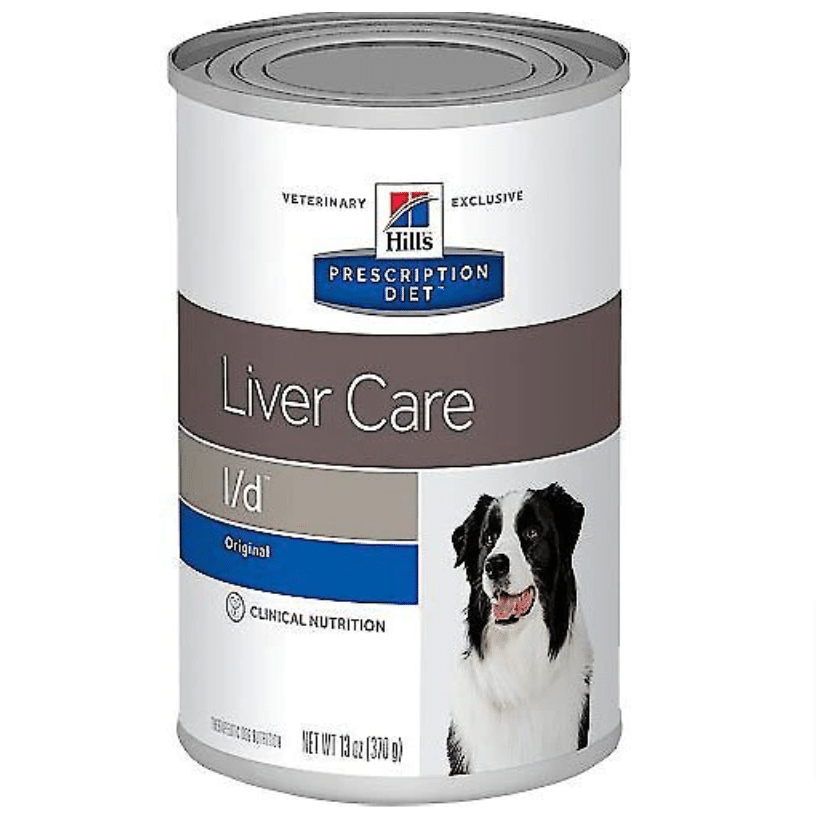
Reviewers are thankful to have access to a product so perfectly designed to support dogs with liver issues. Concentrated levels of various vitamins and minerals prevent the nutritional deficiencies commonly associated with reduced liver function. Many owners have noticed a significant uptick in the health and happiness of their hounds since feeding them this formula. As one person puts it, “I seriously think this saved my dog.” While the look and texture may seem a bit bizarre, pups seem to still enjoy eating it.
Pros
- A perfectly designed food for its intended function with not only lowered protein and fat levels but the addition of other helpful nutrients.
Cons
- Naturally, a low-protein food isn’t going to appeal to pets in quite the same way as a regular or high-protein one will. Some owners have issues with getting their dogs to eat this one.
Best for Pudgy Pooches: Diamond Naturals Light Formula Dry Dog Food
Protein: 18% min Fat: 6% min Calories: 310/cup Fibers: 8% max
Older and overweight dogs have a higher risk of organ issues, so switching them to a lower-calorie food like this one can help keep them healthier for longer. With its extremely low protein and fat ratios, it contains far fewer calories per cup than regular kibble. With lamb meal as its primary protein source, it’s a nice, savory, and kind of different option. Plus, meat meals are also naturally rich in glucosamine and chondroitin, which is good for painful joint conditions that older and/or overweight dogs are susceptible to.
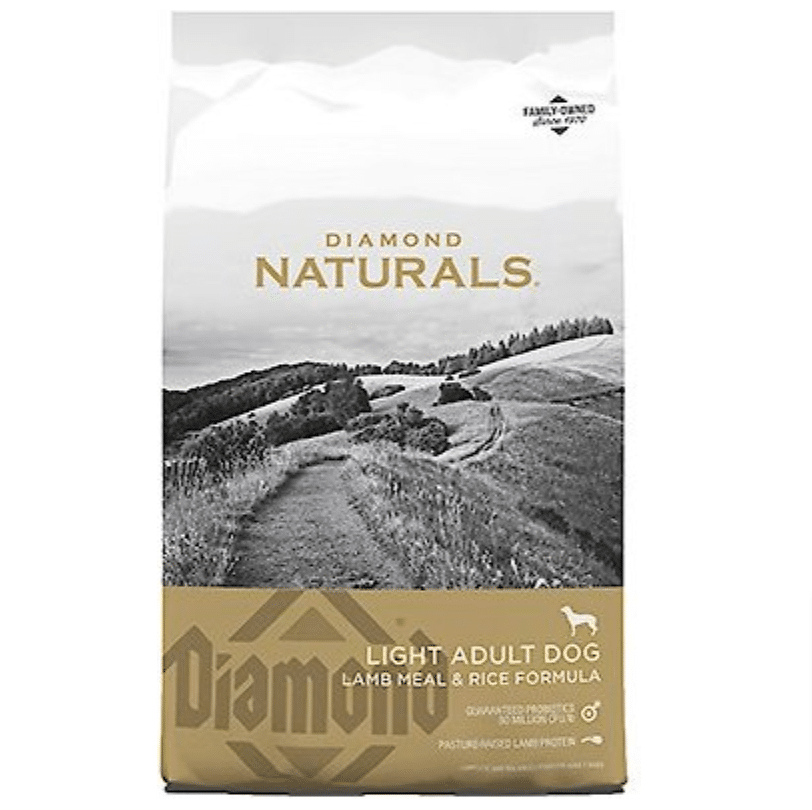
Light food options generally don’t seem to be a great hit with most dogs, but according to buyers, this one seems to be the exception to the rule. One mentions that it’s their dog’s new “favorite food” as “she cleans her plate each time.” It also seems to do wonders with weight loss – taking it off and keeping it off – and is even suitable for dogs with food intolerances and allergies. In that respect, it seems to tick all the right boxes. Diamond Natural is a brand people trust, yet, uncommonly, they are competitively priced too.
Pros
- A great borderline low protein alternative for dogs at risk of developing issues and helping them stay healthy and happy.
Cons
- If you’re looking for a chicken alternative for your pup because of intolerances, this one isn’t for you as it contains chicken fat.
Best for Picky Pups Kidney Care: Purina Pro Plan Veterinary Diets NF Kidney Function Wet Dog Food
Protein: 3.8% min Fat: 5.5% min Calories: 483 Fibers: 2% max
With the lowest amount of protein of all the foods on this list, this is definitely a food you will need to consult your vet about using. However, what it lacks in the amount of protein, it certainly makes up for in the quality. The recipe uses nutrient-dense animal proteins like beef and liver, making the food more appealing and making it more likely that even particularly fussy pups will give it a go. Antioxidants and low phosphorus and sodium levels finish off this healthful mix.
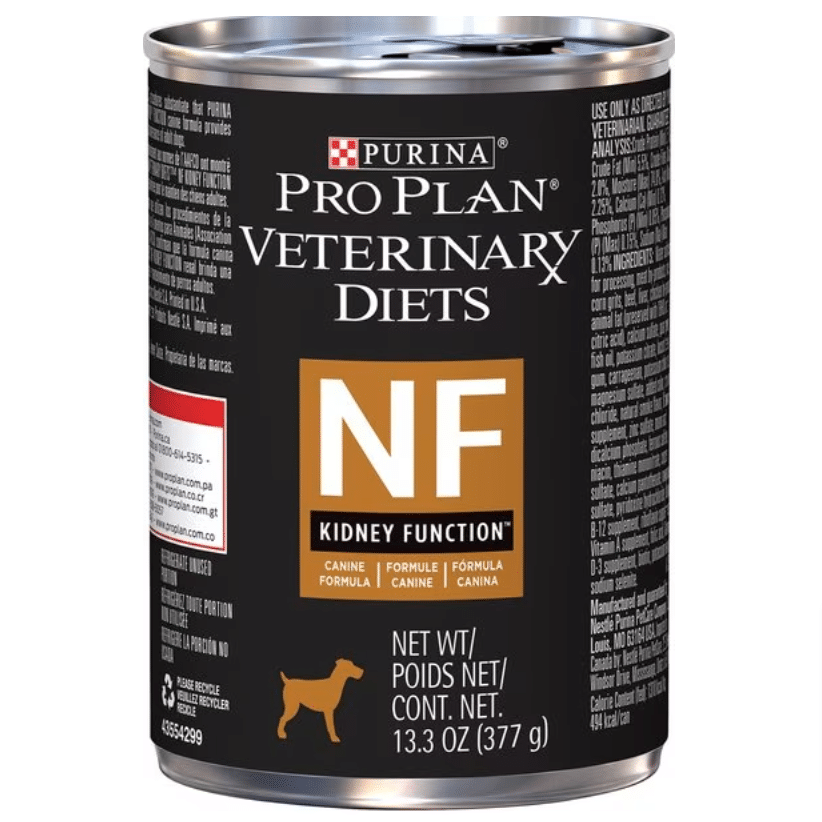
As most buyers would agree, this wet formula is a good alternative to kibble, which with a low level of protein, can sometimes be quite unappetizing for dogs. You could even mix this with your pet’s dry food to encourage them to eat it – it’s nicely tempting with a bacon-like smell (according to one reviewer). In fact, most comments seem to be about how well the food goes down. Beyond that, the extra moisture content is also a bonus, as it can be a struggle to get kidney-issue pets to drink enough.
Pros
- A veterinary-formulated renal support diet even the pickiest of dogs will eat.
Cons
- This canned food does contain some by-products and grains that may upset sensitive tummies.
Dry Vs. Wet Food? Which Is Best For A Low-Protein Diet?
Unless there’s some medical issue whereby your vet would recommend one food over the other, whether you decide to go for wet or dry food is usually just a matter of choice.
Wet food might be considered easier to digest for dogs with especially sensitive stomachs. It can also be a little more tempting for incredibly fussy pups (the high moisture content makes it smell a little more strongly), plus it’s good for pets prone to dehydration. Dogs medically on a low-protein diet may need to drink more water than usual. On the other hand, it’s usually quite a bit more expensive than kibble and can’t be bought in the same quantities due to issues with storing it.
Dry food, aside from being both cheaper and easier to buy in bulk (making it more affordable again), is generally a little more beneficial in terms of added nutrients and added probiotics. Beyond that, chewing the biscuits improves your dog’s dental health, keeping their jaw strong and teeth nicely clean. To make the food more tempting and give it a higher moisture content, you might consider adding a low-sodium broth to the food or simply a little bit of warm water and mushing everything up.
Home-Made Alternative Meals
While it is possible to make your own low-protein food for your pet, you will have to do a lot of research into the right ingredients to ensure that it is nutritionally balanced to support their age, life stage, and lifestyle. This is partly about including the suitable protein, fat, and carbohydrate ratio. Beyond that, you’ll have to add ingredients containing all the nutrients (vitamins and minerals) your dog needs.
A quick Google search reveals a range of possible recipes from “dog expert” websites. However, you won’t want to blindly trust these without doing a little of your own research. Stick with more reputable sites and check each intended ingredient – not all human foods can be given to dogs. The American Kennel Club’s (AKC) article on choosing balanced ingredients for your homemade dog food is an excellent place to start.
Feeding Your Doodle A Low-Protein Diet: Frequently Asked Questions
Lowering your pup’s daily protein levels needs to be done with the greatest care. That’s why it’s a good idea to pick up a specifically formulated food based on your vet’s advice. If you do decide to take the homemade food route, again, this is something that’s best done under the guidance of a nutrition expert.
While there is some debate on the effects of lowering protein levels for dogs with kidney issues, decreased dietary protein seems to slow the progression of renal failure by reducing strain on these organs and preserving their function. However, protein is a vital part of the canine diet, so this needs to be done very carefully indeed.
There is no one-size fits all solution to the best low-protein food. There are many different types (including wet foods and kibbles) and recipes that incorporate different kinds of proteins. Plus, specifically designed blends better support dogs with various conditions. These contain lower potassium, sodium, or higher levels of omega acids, for instance.
While there are foods out there that contain 30% protein or even more, before deciding to opt for one of these, you’re going to need to think through your dog’s specific nutritional needs. These foods are typically created for working animals or sporting pups. Either way, only hounds that get a high level of exercise should ever be fed such high-protein food.
While it may be the case that your pet has a general protein intolerance, more often than not, their body will be reacting to a certain kind of protein. Your dog’s vet might put them on a low-protein diet while they attempt to identify which of the various proteins (often chicken based) they have a problem with and which are better for them to consume.
Final Thoughts
A low-protein diet for dogs is relatively uncommon. As protein forms an essential part of most canine foods (because they have so much of a need for it), picking up wet food or kibble with a lower-than-average protein content can be tricky. It should only ever be done on the advice of your vet.
If you do decide to switch your dog to a low-protein diet, you’re going to do so slowly and carefully. You’ll also want to ensure you get the right food that contains top-quality protein and a good balance of other ingredients. The ones on our list all meet these criteria. However, the one you go for will obviously depend on your pet’s specific needs. Either way, you should be able to find something that works for you here.
Learn How to Stop Shavedowns For Good & Keep Matting At Bay!

Discover the PROPER Doodle coat care routine that gets your pup to cooperate…helps you nip tangles in the bud…and gets groomers to do exactly what you want.
Plus, get $520 worth of Bonus Materials for FREE, including:- Doodle Parenthood Community and Support Group ($190 value)
- Custom Doodle Coat Care Plan Lifetime Access ($75 value)
- Easy to Use Doodle Grooming Tracker ($20 value)
- And MORE!


